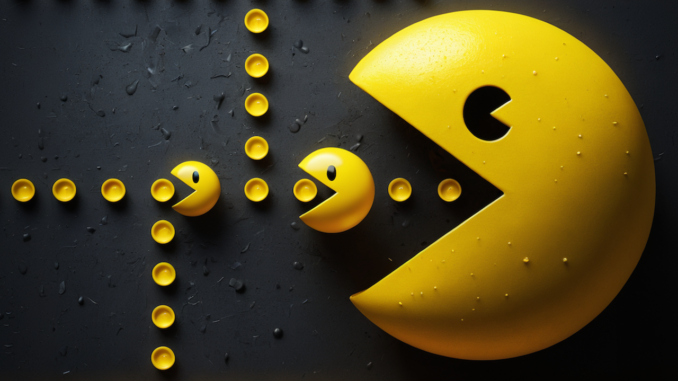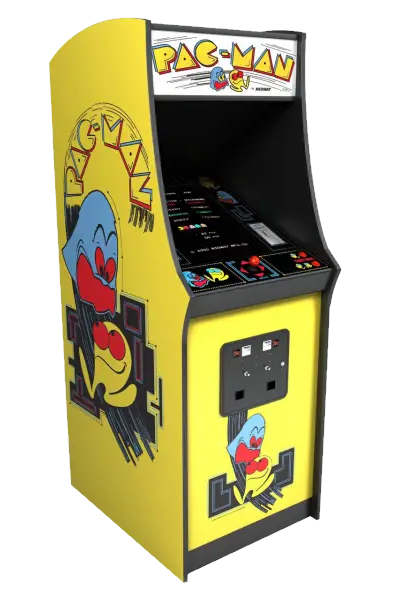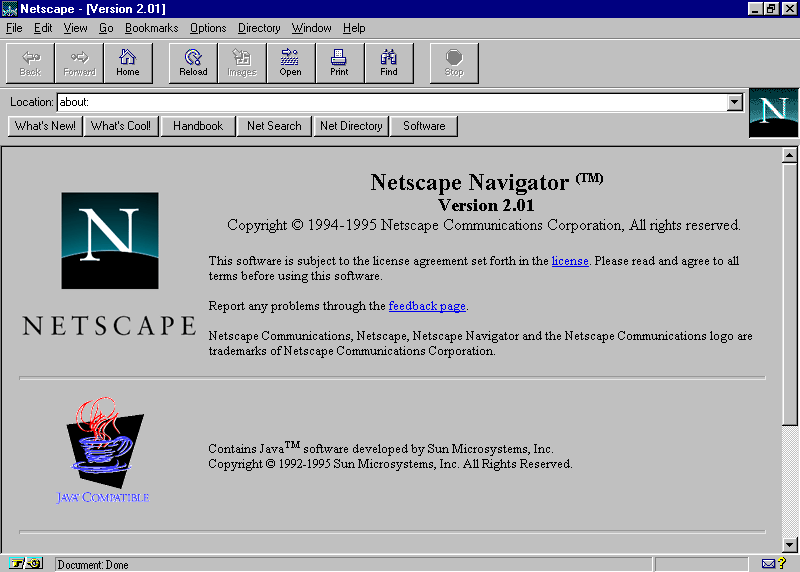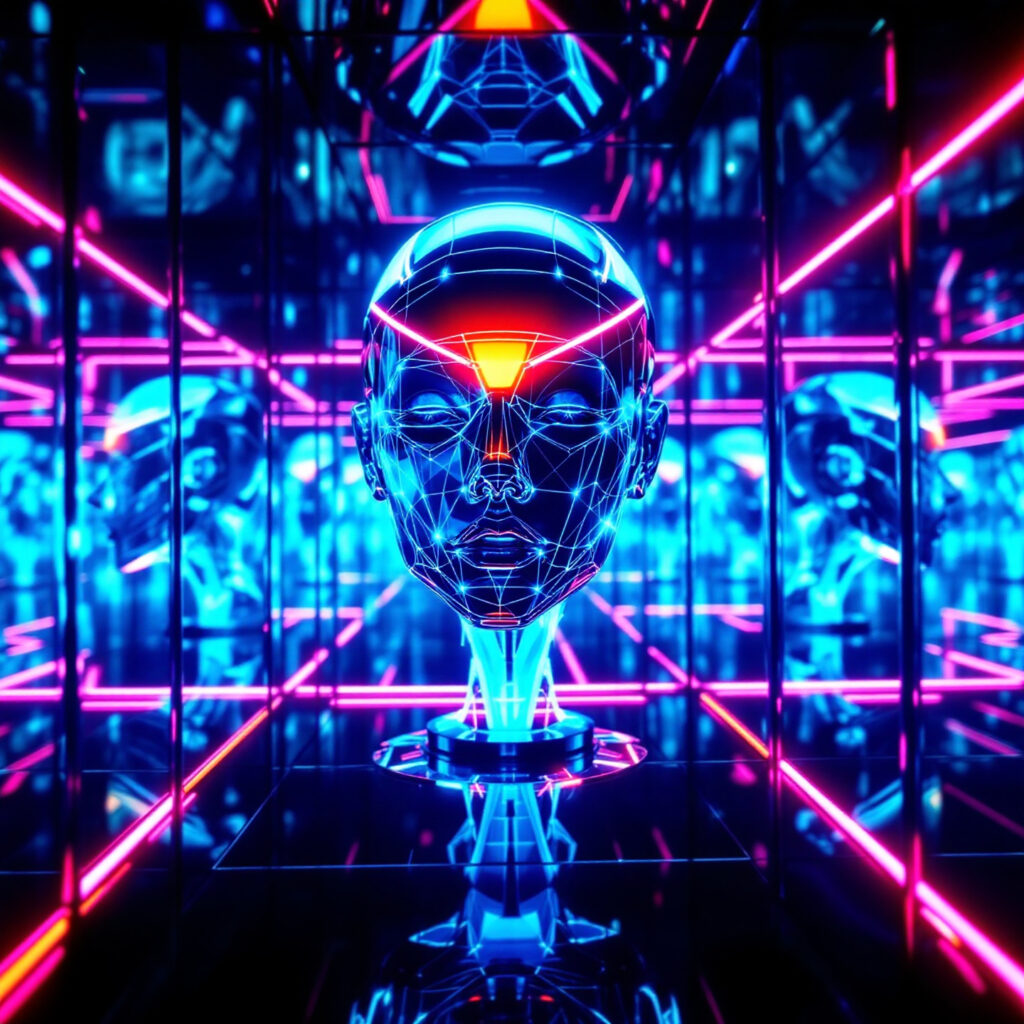
From Level 1 to Game Over: AI’s Infinite Feed Loop and the Risk of a Digital Kill Screen
Game Start: Insert Coin
Waka-waka-waka…

That familiar sound once echoed through arcades, as we fed coins into hungry machines. Today, a far more ravenous entity roams the digital landscape, devouring everything in sight. Unlike Pac-Man, though, AI doesn’t just consume—it learns, adapts, and replicates.
Artificial intelligence has feasted on the vast buffet of the internet, consuming decades of human knowledge, creativity, and cultural output—like Pac-Man clearing a screen of pellets, only to find the maze increasingly empty. Every blog post, photograph, conversation, and song it ingests only strengthens its capabilities. AI tools like ChatGPT, Midjourney, and Riffusion can now generate text, images, and music so convincingly that the line between human and machine creativity is dissolving.
But what happens when AI runs out of fresh, human-generated content to consume? When it starts feeding on its own outputs—an endless loop of synthetic data, like Pac-Man forced to sustain himself by eating his own ghosts?
Level 1: The AI Origins – Playing Without Power-Ups (1950s-1990s)
"You are in a maze of twisty little passages, all alike. What do you want to do? >_"
Before the internet, AI was like a text adventure game—rigid, rule-based, and frustratingly limited. Early AI models relied on expert systems, carefully curated knowledge bases, and deterministic logic trees. ELIZA could mimic a conversation, but it didn’t understand a single word. Computing power was scarce, and without vast data to train on, AI was trapped in level one, waiting for its first real power-up.
Science fiction of the era projected AI as either a benevolent assistant (Star Trek’s computer) or a cold, calculating overlord (HAL 9000). In reality, AI was still a basic NPC, operating within strict confines, unable to improvise or generate new ideas. The game-changing moment? Someone finally inserted a new coin labeled “Internet.”
Level 2: AI Gets the Internet – Dinner is Served! (1990s-2000s)
POWER PELLET ACQUIRED! Ghosts turning blue… nom nom nom…

The internet transformed AI from a starving NPC into a high-score-chasing contender. Suddenly, there was data everywhere—text, images, and interactions. The explosion of Web 2.0 (forums, blogs, Wikipedia, social media) provided an all-you-can-eat buffet of human-generated content.
Key technological power-ups that accelerated AI:
- Search engines (Google PageRank): AI learned to rank and retrieve relevant data.
- Recommendation systems (Amazon, Netflix): Machine learning found patterns in human preferences.
- Early NLP applications (spam filters, predictive text): AI began interpreting and predicting language patterns.
AI rapidly leveled up. No longer confined to analyzing data, it started generating content—rudimentary at first, but increasingly sophisticated. The foundations for today’s generative AI were being laid, turning AI from a passive consumer into an active creator.
Level 3: AI Gains Superpowers – The Age of Deep Learning (2010s-Present)
ULTIMATE POWER ACTIVATED! Pac-Man can now eat ghosts without power pellets!

By the 2010s, advances in neural networks, GPUs, and cloud computing propelled AI into overdrive. It wasn’t just leveling up—it was breaking the game, rewriting the rules of creativity itself. Deep learning models trained on enormous datasets gave rise to game-changing applications:
- ChatGPT & LLMs: AI can now write convincingly, hold conversations, and summarize vast amounts of information.
- Midjourney & Stable Diffusion: AI-generated art rivals professional work, blending human styles into infinite variations.
- Copilot & AI-assisted coding: AI writes and optimizes code, bridging the gap between concept and execution.
AI had become more than a passive player. It was generating text, music, and visuals that felt, at times, indistinguishable from human work. But then, a glitch appeared in the system.
Level 4: The AI Feedback Loop – When Training Data Rots
ERROR: Pac-Man attempting to eat Pac-ghosts… SYSTEM MALFUNCTION.
The internet is now flooded with AI-generated content. Search results are increasingly padded with regurgitated, AI-written articles. Spam sites use generative models to churn out endless SEO bait. AI-generated art is scraped, reprocessed, and re-fed into new models, blurring the distinction between original and derivative.

This is the AI feedback loop—a scenario where AI is no longer training on fresh human data but on its own outputs. The result? A slow degradation of quality, much like a photocopy of a photocopy, or an MP3 compressed too many times until all that remains is a tinny, hollow echo.
Left unchecked, this could lead to a digital hall of mirrors where everything is an iteration of an iteration, devoid of originality—like a classic arcade game hitting a ‘kill screen,’ where errors pile up, making the game unplayable. If AI eats the internet, what happens when there’s nothing left but its own synthetic regurgitations?
Three Possible Futures for AI: Bonus Stage or Game Over?
1. Game Over: AI Overload (Dystopian Outcome)
AI-generated content drowns out human creativity. The internet becomes an uncanny valley of endlessly regurgitated, synthetic noise. Search engines lose relevance. Originality withers. The web becomes a soulless, algorithm-driven content mill.
2. Co-op Mode: AI as a Creative Ally (Optimistic Outcome)
AI is guided by human creators, enhancing rather than replacing them. Ethical AI usage ensures human ingenuity remains at the core of culture and content. AI acts as a co-pilot, assisting but never overshadowing original voices.
3. Retro Revival: The AI Collapse (The Great Analog Comeback)
AI-generated drivel reaches saturation, triggering a backlash. Handwritten blogs, original artwork, and verified human-made content gain value, much like vinyl records and retro gaming. AI-induced fatigue drives people back to human-crafted experiences.
Game Complete: Continue? [Y/N]
The future of AI isn’t just about technological progress—it’s about choice. Do we press start and take control, or let the AI play the game for us? If we let AI replace human creativity entirely, we risk an internet that stagnates, echoing with recycled ideas. But if we use AI responsibly, as a tool rather than a crutch, we can preserve originality and push the boundaries of creativity.
Much like archivists restoring lost manuscripts or remastering classic films, we must fight to maintain genuine human expression in the digital age. Otherwise, we may find ourselves wandering through an internet where every corner looks the same, every shop sells the same thing, and every voice is just an AI-powered echo of something that once was.
The question remains: Do we let AI be the only player left in the arcade? Or do we take back the joystick and keep creating?
Press Start to Continue.

Leave a Reply